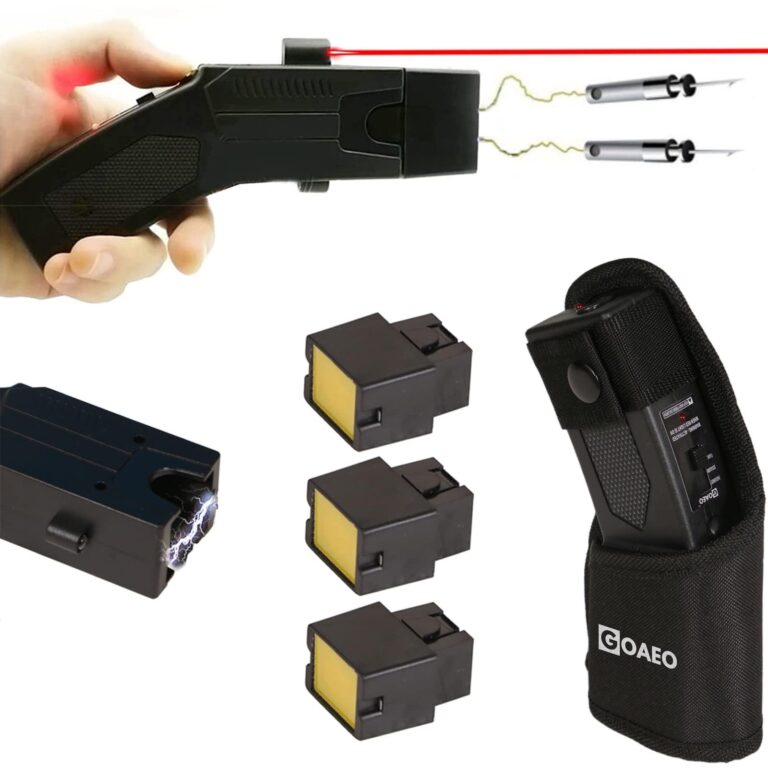Table of Contents
- Effectiveness of Stun Guns on Younger Attackers Physical Considerations and Response Dynamics
- Understanding Younger Attackers Behavioral Patterns and Stun Gun Impact
- Legal and Safety Implications of Using Stun Guns Against Minors
- Best Practices and Alternatives for Self-Defense in Encounters with Younger Aggressors
- Concluding Remarks
Effectiveness of Stun Guns on Younger Attackers Physical Considerations and Response Dynamics
When considering the impact of stun guns on younger attackers, physical size and muscle mass play critical roles in how effective the device is. Younger individuals tend to have lesser muscle density and lower body mass compared to adults, which can make the electrical shock delivered by a stun gun more disruptive to their neuromuscular system. This often results in a quicker incapacitation, as the electricity interferes with their muscle control and motor functions more dramatically. However, the response dynamics vary widely depending on the specific age, physical fitness, and the attacker’s level of adrenaline at the moment. Younger attackers may exhibit unpredictable reactions, either succumbing quickly or momentarily resisting before becoming incapacitated.
Several key factors influence the stun gun’s overall impact on a youthful assailant:
- Adrenaline Spike: Younger attackers can experience intense adrenaline rushes, which sometimes delay the stun effect temporarily.
- Point of Contact: The location where the stun gun electrodes make contact significantly affects the response time; nerve-dense areas yield better results.
- Duration of Exposure: Longer exposure times typically increase effectiveness but could escalate risks.
Hence, understanding these physical and physiological considerations is central to maximizing safety while handling encounters with younger aggressors.
Understanding Younger Attackers Behavioral Patterns and Stun Gun Impact
Younger attackers often exhibit impulsive and unpredictable behavior, making their actions harder to anticipate compared to older assailants. Their response to threat stimuli can be driven by adrenaline and a heightened sense of invincibility, which sometimes results in underestimating the effects of defensive tools like stun guns. However, these behavioral traits also mean they may not be fully prepared to handle sudden incapacitation, giving stun guns a potential advantage in subduing aggressive actions quickly.
When considering stun gun effectiveness against younger attackers, several key factors come into play:
- Adrenaline surges: High adrenaline levels can sometimes diminish immediate pain perception, but stun guns induce temporary neuromuscular incapacitation, which is difficult to override.
- Physical resilience: While younger individuals may have more physical strength, the stun gun’s electric shock disrupts muscle control rather than relying on pain alone.
- Reaction time: The element of surprise is crucial; a well-timed deployment can overwhelm even the most aggressive younger assailant before countermeasures are launched.
Legal and Safety Implications of Using Stun Guns Against Minors
Employing stun guns against minors carries significant legal risks that vary widely depending on jurisdiction. Many regions classify the use of such devices on individuals under 18 as excessive force or even assault, regardless of the context. In some areas, strict regulations limit the possession and deployment of stun guns altogether, particularly when it comes to younger individuals. Misuse can lead to criminal charges, civil lawsuits, or child endangerment accusations, putting the user at substantial legal jeopardy.
From a safety standpoint, the physiological responses of minors to electrical shocks are not always predictable, making the use of stun guns potentially hazardous. Minor bodies may be more susceptible to injury, including cardiac complications or neurological effects. Considerations should include:
- Age and health condition: Younger attackers may have underlying health issues that could be exacerbated.
- Duration and intensity of the shock: Longer or more powerful shocks can cause unintended harm.
- Alternatives to force: Non-violent de-escalation techniques are often safer and legally preferable.
Ultimately, while stun guns might be effective in incapacitating aggressors briefly, the legal and safety implications when used against minors demand cautious evaluation, prioritizing protection over punishment.
Best Practices and Alternatives for Self-Defense in Encounters with Younger Aggressors
When confronted with younger aggressors, relying solely on a stun gun may not always yield the desired outcome. Younger individuals often possess greater agility and resilience, which can limit the immediate incapacitating effects of a stun device. It’s critical to combine the use of any self-defense tool with practical techniques that enhance your ability to control the situation effectively. Prioritize maintaining distance and using verbal de-escalation tactics alongside any physical deterrents to increase your safety margin.
In addition to stun guns, consider adopting alternative self-defense measures that cater to varied encounter dynamics. Some effective options include:
- Personal alarms: Emit loud sounds to attract attention and potentially deter aggressive behavior.
- Physical self-defense training: Techniques designed to disable or escape threats without escalating violence.
- Improved situational awareness: Recognizing early signs of aggression to avoid or prepare for confrontation.
- Non-lethal deterrents: Pepper spray or tactical flashlights that provide more options in managing aggressive encounters.
Integrating these approaches ensures a holistic personal security strategy that is adaptable and sensitive to the unpredictable nature of encounters with younger attackers.
Concluding Remarks
In conclusion, while stun guns can offer a valuable layer of self-defense, their effectiveness against younger attackers depends on various factors including the user’s familiarity with the device, the attacker’s size and state of mind, and the situation’s dynamics. It’s important to remember that no single tool guarantees safety, so combining stun guns with awareness, de-escalation techniques, and physical preparedness can significantly improve your chances of protecting yourself. Staying informed and practicing responsible use will always be key in making the most of any self-defense tool.Check Our Other Blogs
- StunGun – Your Trusted Source for Stun Guns, Laws, and Self-Defense Tips
- PepperSprayLaws – Your Trusted Resource for Pepper Spray Information
- StunGunLaws – Your Trusted Guide to Stun Gun Legality and Safety





